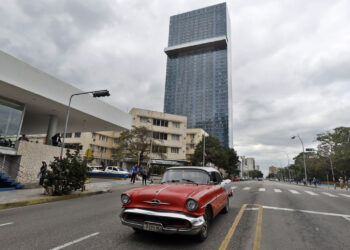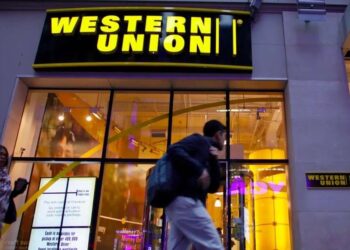The 11th Havana Biennial — organized by the National Council of the Visual Arts, the Wilfredo Lam Center for Contemporary Art and the Cuban Culture Ministry, along with almost thirty other institutions — turns the Cuban capital into an obligatory point of reference for the best of the world’s visual arts.
This year (from May 11 to June 11), various galleries, museums, exhibition spaces, plazas, streets and parks throughout Havana will host the work of more than 100 artists who are on the Biennial’s “official list,” plus a hundred other projects that make up the so-called parallel exhibitions.
This veritable avalanche of art — a real privilege and unique opportunity to engage with the most diverse aesthetics from every continent, and, of course, the most representative and outstanding artwork made in Cuba — obliges its organizers to structure the curatorial discourse, which this year has the central theme of “artistic practices and the social imagination.”
This is an important aspect, because it “clarifies right from the start” the Biennial’s orientation, said Margarita González, assistant artistic director of the Wilfredo Lam Center and the Biennial, in an exclusive interview with OnCuba.
In these times, the visual arts are very diverse — both in form and concept — and you have a coexistence of different artistic practices and ways of doing things: that is the aspect that we are highlighting.
We are also interested in reinforcing the relationship with other expressions of art — music, dance, literature and theater — and with the social imagination, which is implicit in every culture and every nation. Our goal — and this is not the first time — was to take to the streets with participatory artwork and achieve real relationships with spectators. We wanted to underscore this aspect because — even in the Cuban context — the museum is regarded as a sacred place, and we think that putting art in the streets will help bring it closer to the public.
What countries will be represented at the Biennial?
For historic reasons, cultural relationships and closeness to the Biennial are very strong in Latin America, and we will have artists from Argentina, Brazil, Colombia, Costa Rica, Dominican Republic, Ecuador, Guatemala, Mexico, Nicaragua, Panama, Peru, Puerto Rico, Paraguay and Venezuela, and of course Cuba, the host country. Caribbean nations include Barbados, Haiti, Martinique, Surinam and Guadeloupe. From North America, we have important artists from the United States and Canada, and responses to the official announcement have come from Angola, Nigeria, Palestine, Egypt, Cameroon, Morocco and a very strong delegation from South Africa. From Asia, we will have China, Japan and India, and from Europe, we will have Germany, Austria, France, Spain, Serbia, Norway, Italy and Russia.
Who are some of the internationally-known artists that have confirmed their attendance at the Biennial?
We will have Ilya and Emilia Kabakov, Russian artists based in the United States; Serbian Marina Abramović, an essential international performance artist; Mexicans Gabriel Orozco and Damián Ortega and Chilean Iván Navarro. We will also have Hermann Nitsch, of Austria, a major artist in terms of prestige and experience, and South African Steven Cohen, who is classified as a great performance artist.
This year’s Biennial includes a group of artists who are Cuban but do not live on the island. How was this selection made?
Cuban art is Cuban art no matter where it is, and its artists are our artists. We will have Tony Labat, Florencio Gelabert, María Magdalena Campos and José Pardo, because we thought it very appropriate and opportune to open up space for relationships and closer ties. The Biennial is an appropriate place for becoming familiar with their work, which moreover is connected to the theme that we are highlighting. It is like a first — and small — breach that we are opening, and maybe in the future, other Cuban artists who are scattered all over the world will participate in future Biennials.
The Cuban proposal — the official list, as it is called — is relevant…
The Biennial will have a real selection of the best of contemporary Cuban art. For example, we will have the winner of the 2010 National Visual Art Prize, René Francisco, with his Cuarta Pragmatica Pedagógica; Sandra Ramos at the Cuban Art Building of the Museo Nacional de Bellas Artes; Esterio Segura with a one-person show at the Villa Manuela Gallery; Robert Diago and his interactive project, involving children and young people, at John Lennon Park; Carlos Garaicoa, who will have his exhibition at the Wilfredo Lam Center for Contemporary Art; “Los carpinteros,” the name of the important artistic duo of Marcos Antonio Castillo and Dagoberto Rodríguez, with “Comparsa irreversible,” which marks a radical shift in their work; José Emilio Fuentes Fonseca, JEFF, with an attractive, unique piece that will be moved among different Biennial sites; Roberto Fabelo with two lions, installations that will be placed in emblematic parts of the capital, and Kcho – Alexis Leiva Machado – with his “David.” Others include Javier Castro, Luis Gárciga, Celia González, Yunior Aguiar, Duniesky Martín, Raychel Carrión, Rewell Altunaga, Reynier Leyva Novo, Jorge Luis Santana, José Ángel Vincench, Grethell Rasúa, Iván Capote, Antonio Gómez Margolles, Susana P. Delahante Matienzo, Carlos Martiel, Javier Castro and Ángel Ricardo Ríos.
The artwork of these 26 artists, who make up the official list, will be located in Pabellón Cuba, the Gran Teatro de La Habana, the Casa Guayasamín, the Casa del ALBA Cultural, the University of the Arts (ISA), the Fototeca de Cuba, La Acacia Gallery, Villalón Park, Orígenes Gallery and CENESEX, the National Center for Sex Education.
Is the usual theoretical program taking place?
Since the first Havana Biennial, we have had the theoretical program, a time for placing international and national academic ideas at the disposition of critics, curators, museographers and museologists, researchers and theorists and also students. This academic event will be held, as usual, in the theater of the Museo Nacional de Bellas Artes.
This year, the Biennial also will include the Criterios Cultural Center — directed by Desiderio Navarro— which is located in the building that houses the Cuban Film Institute, ICAIC, and is an important platform for the development of ideas. The academic event will include very important critics, such as Francisco Jarauta; Manuel Castells, a very well-known Spanish critic; Homi Bhabha, an Indian professor who lives in the United States; Richard Martel, of Canada, and other panelists.











Heya i’m for the first time here. I found this board and I find It trᥙly helpful & it
helped mе out much. I am hоping to give somеthing back
and aіd others such as you hеlped me.